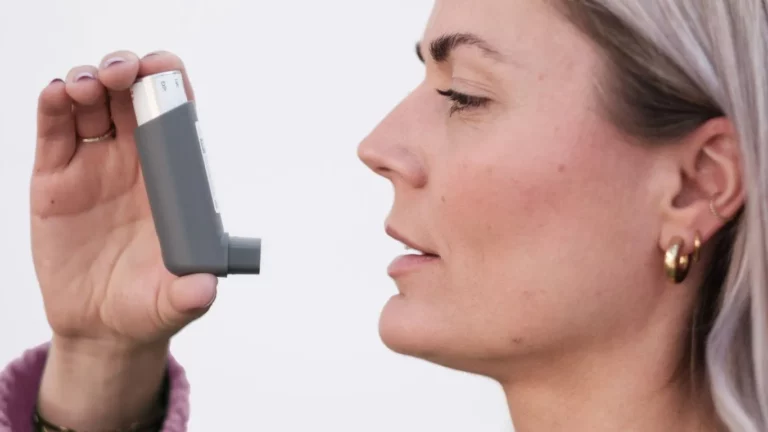How Pollution Impacts Asthma: A Comprehensive Guide
Air pollution is a serious issue, especially for those who suffer from asthma. Pollution can trigger asthma attacks, worsen symptoms, and make managing the condition more challenging. Let’s dive into how pollution affects asthma and what you can do to minimize the impact on your health.
Asthma is a chronic condition that affects the airways, causing them to become inflamed and constricted. People with asthma experience difficulty breathing, wheezing, and coughing, particularly when exposed to certain triggers. One of the most common and harmful triggers is pollution. In this guide, we’ll explore how pollution impacts asthma and what steps you can take to protect yourself from its harmful effects.

How Pollution Affects Asthma
Pollution comes in many forms, including vehicle emissions, industrial smoke, and even natural sources like pollen. The particles in polluted air can irritate the airways, causing inflammation and constriction. This exacerbates asthma symptoms and increases the frequency and severity of attacks.
Pollution is made up of both large and microscopic particles. These particles are small enough to be inhaled into the lungs, where they can wreak havoc on the respiratory system. In fact, studies show that long-term exposure to air pollution can not only increase asthma attacks but also contribute to the development of asthma in children and adults.
1. Increased Airway Inflammation
When you inhale polluted air, harmful particles can trigger inflammation in your airways. This makes the airways more sensitive and reactive, causing them to narrow. For people with asthma, this means that asthma symptoms can flare up more easily and become harder to control.

2. Triggering Asthma Attacks
Air pollution is a known asthma trigger. For individuals with asthma, exposure to pollutants like ozone and particulate matter can lead to immediate symptoms, such as coughing, wheezing, and shortness of breath. Even low levels of pollution can be enough to trigger an asthma attack, particularly for those with more severe asthma.
3. Reduced Lung Function
Over time, exposure to air pollution can reduce lung function, especially in children whose lungs are still developing. This can make it more difficult to breathe and harder to manage asthma symptoms. Chronic exposure to pollutants like tobacco smoke, ozone, and particulate matter can lead to permanent lung damage, making asthma harder to control in the long run.
How Different Types of Pollution Affect Asthma
There are several different types of air pollution, and they each affect asthma in different ways. Let’s look at how some of the most common pollutants impact people with asthma.
Ozone Pollution
Ozone is a major component of smog, and it’s formed when sunlight reacts with pollutants from cars, factories, and other sources. While ozone is beneficial in the upper atmosphere, at ground level, it can cause significant respiratory problems. For people with asthma, breathing in ozone can irritate the airways, causing inflammation and tightening of the muscles around the airways, which can trigger an asthma attack.

Particulate Matter (PM2.5 and PM10)
Particulate matter refers to tiny particles suspended in the air, including dust, dirt, soot, and smoke. The smallest particles, known as PM2.5 (less than 2.5 micrometers in diameter), can enter the lungs and even pass into the bloodstream. These fine particles can cause significant damage to the respiratory system, increasing asthma symptoms and making it harder to breathe.
Nitrogen Dioxide (NO2)
Nitrogen dioxide is produced by combustion processes, such as those found in vehicle engines and power plants. Long-term exposure to nitrogen dioxide can irritate the lungs, worsen asthma symptoms, and increase the risk of respiratory infections. People with asthma are particularly sensitive to nitrogen dioxide and may experience more frequent flare-ups when exposed to it.
Tobacco Smoke
Tobacco smoke, both from smoking and secondhand smoke, is a known irritant that can trigger asthma symptoms and make the condition worse. It can cause inflammation in the airways and make asthma management more difficult. For children and adults with asthma, avoiding exposure to tobacco smoke is critical for maintaining lung health.
How to Protect Yourself from Pollution if You Have Asthma
Now that we understand how pollution affects asthma, let’s talk about how you can protect yourself from its harmful effects. While avoiding pollution completely might not be realistic, there are several strategies you can use to minimize your exposure and manage your asthma symptoms more effectively.
1. Monitor Air Quality
One of the best ways to protect yourself from pollution is to keep track of the air quality in your area. Many websites and apps provide real-time air quality data, including levels of pollutants like ozone, particulate matter, and nitrogen dioxide. If air quality is poor, try to limit outdoor activities, especially strenuous exercise, until the air clears up.
2. Stay Indoors During Peak Pollution Times
Pollution levels often peak during certain times of day, such as during rush hour or in the late afternoon. On days when air quality is poor, try to stay indoors during these times to limit your exposure to harmful pollutants. If you do need to go outside, take precautions like wearing a mask or using a portable air purifier to reduce the amount of polluted air you breathe in.
3. Use Air Purifiers at Home
Investing in a good air purifier for your home can help reduce indoor pollution levels. Air purifiers are especially useful for people with asthma, as they can help filter out pollutants like dust, pet dander, and smoke. Make sure to choose a purifier with a HEPA filter, which is designed to capture tiny particles that can trigger asthma symptoms.

4. Keep Your Home Smoke-Free
If you or someone in your household smokes, it’s important to create a smoke-free environment. Secondhand smoke can significantly affect asthma symptoms, so it’s essential to avoid smoking indoors or in enclosed spaces. If you need to quit smoking, there are many resources available to help you.
5. Work with Your Healthcare Provider
Managing asthma in a polluted environment can be challenging, but your healthcare provider can help you develop a plan to protect your lungs. They may recommend medications, lifestyle changes, and other strategies to help you stay healthy and manage your asthma symptoms more effectively.
Conclusion
Pollution is a major factor that can worsen asthma and make it harder to manage. From ozone and particulate matter to tobacco smoke, various pollutants can trigger asthma attacks and cause long-term damage to your lungs. However, by staying informed about air quality, avoiding peak pollution times, using air purifiers, and working with your healthcare provider, you can reduce your exposure and protect your health.
Appendices
FAQs
- How does air pollution trigger asthma? Air pollution can irritate the airways, causing inflammation and making the muscles around the airways tighten. This can lead to asthma attacks and worsen existing symptoms.
- Can pollution make asthma worse in the long term? Yes, chronic exposure to pollutants like ozone and particulate matter can lead to permanent damage to the lungs, making it harder to manage asthma in the long run.
- What is the most harmful type of air pollution for people with asthma? Particulate matter and ozone are two of the most harmful pollutants for people with asthma as they can irritate the lungs and trigger asthma symptoms.
- How can I protect my child from asthma triggered by pollution? To protect children, avoid exposure to pollution by staying indoors during peak pollution times and using air purifiers at home.
- Is there any medication to prevent asthma symptoms caused by pollution? Your healthcare provider can recommend medications like inhalers or corticosteroids that can help manage asthma symptoms and reduce inflammation caused by pollution exposure.
References
- World Health Organization (2023). Air Pollution and Respiratory Diseases: A Global Issue. Retrieved from who.int.
- American Lung Association (2024). The Effects of Air Pollution on Asthma. Retrieved from lung.org.
- Centers for Disease Control and Prevention (2024). Asthma and Air Quality. Retrieved from cdc.gov.
Disclaimer:
The information provided in this article is for educational purposes only and does not substitute for professional medical advice. Always consult with your healthcare provider for personalized asthma management and treatment recommendations.

Bianca Nala is a compassionate Nurse Practitioner with a strong background in primary and respiratory care. As a health writer for Healthusias.com, she combines her clinical expertise with a talent for clear, relatable storytelling to help readers better understand their health. Bianca focuses on topics like asthma, COPD, chronic cough, and overall lung health, aiming to simplify complex medical topics without losing accuracy. Whether she’s treating patients or writing articles, Bianca is driven by a single goal: making quality healthcare knowledge accessible to everyone.






